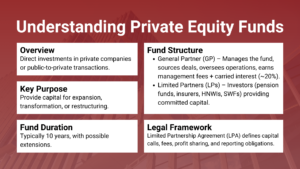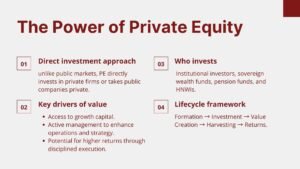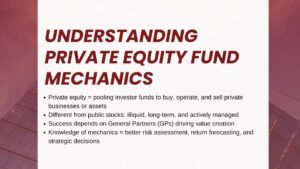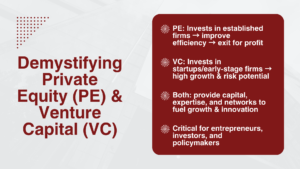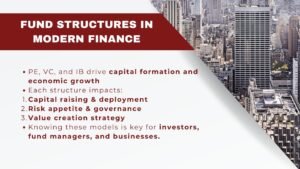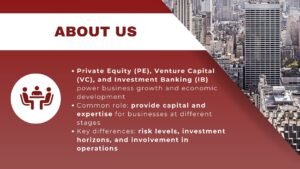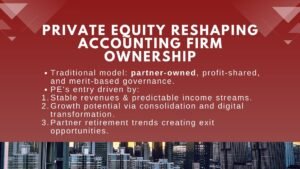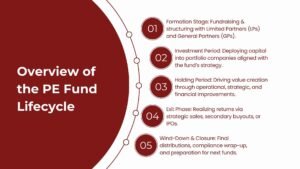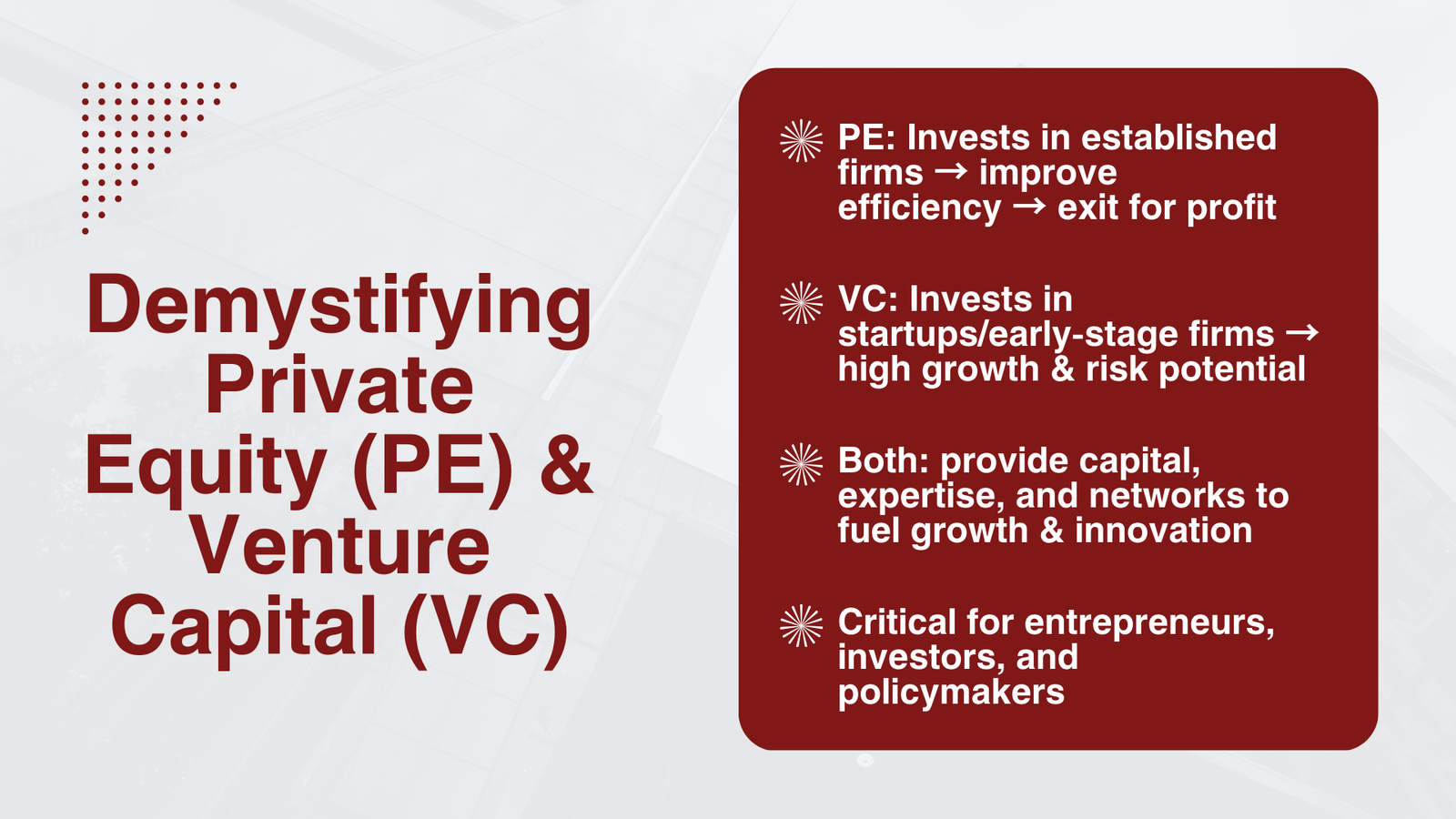
Hands on Private Equity and Venture Capital Demystified Training
Hands on Private Equity and Venture Capital Demystified Training
Private equity and venture capital are two of the most influential entities in the world of investment where firms wishing to grow to the next level seek them to offer essential finances. Even though these two types of investment are frequently discussed in the same relation, they possess various features, structure, and purpose.
Private equity is generally associated with making investments in established firms, taking substantial ownership positions and making business process upgrades so that their sales will be able to boost returns on investments, and finally getting a profit by selling the investment. In comparison, venture capital targets high-growth and early-stage companies and invests funds in those in exchange of ownership in those companies having both high potentials and risks.
Knowledge of these types of investments is critical to entrepreneurs wishing to raise funds, investors assessing the merits of various choices and those in the financial field or corporate policymaking. The role of private equity and venture capital is essential when it comes to ensuring it brings innovation and growth in business as well as growth in the economy. They allow firms to tap into the resources, know-how and networks that they require to grow, launch new markets and increase their competitive edge.
Through the de-mystification of how such types of investment operate, one is able to have a greater understanding of how such investments shape industries and consequently sustain the global economy. For those seeking deeper insights, a hands-on venture capital course for beginners provides practical exposure, while a private equity and venture capital training Singapore program equips professionals and entrepreneurs with the skills needed to navigate these dynamic investment landscapes.
Key Differences Between Private Equity and Venture Capital
There are main differences between private equity and venture capital which pertain to the level of the business they are focusing on, the amount of investments, the extent of risk they are taking and the extent of control they have over the companies in which they invest. Investing with private equity is usually a process that is targeting already established businesses which have already matured and are generating stable revenues and operations. Such companies might be in need of capital to expand or reform or even buy out. Profitability, cost reduction and efficiency gains are an objective typically sought by a private equity investor to the point of exiting the investment, commonly by selling or making public.
Instead, venture capital is aimed at startups and young businesses which have a high growth story and little operating history. The aim of venture capitalists when investing in such companies is to know that most companies will fail but the successful ones could produce exponential returns. The investment sizes of venture capital can be lower than those in private equity and the strategy is increasingly focused on the cultivation of innovation and the flood of growth as opposed to the strategy of restructuring the current operations. Owing to these differences, the two models have differing strategies, risk profiles and time horizons though both work towards generating returns.
Structure and Mechanics of Private Equity
Private equity firms mostly accept capital, which includes institutional shareholders, high-net-worth people, and other times family offices, and bundle the money into investment funds referred to as private equity funds. The structure of such funds is normally a limited partnership with the role of the private equity firm being the general partner who runs the fund and the role of the investors being the limited partners who provide the capital. The general partner is involved in the process of sourcing deals, due diligence, acquisition of companies, and management of portfolio companies in order to add value to them.
After financing an investment, the private equity firms usually collaborate with management of a firm to adopt strategies of change gradually. This may be through simplification in its operations, entry into new markets, launching new products, or reorganizing the company to enhance performance. Private equity investment horizon is usually between three to seven years following which the firm would attempt to exit the investment. Exits could be through many forms i.e. selling out to another firm, selling out to another form of private equity or an initial public offering (IPO). This is to achieve returns that are above returns that can be sought using public markets or other types of assets.
Structure and Mechanics of Venture Capital
Venture capital is structurally similar to private equity in concept but modified to the demands of the early-stage companies. The venture capital firms also fundraise with institutional investors and high net-worth individuals, whose capital amounts to form a fund managed on their behalf by the general partner. But venture capitalists normally invest less so as to be minority stakeholders and founders can remain in the driving seat but having access to money and expertise.
Venture capital funding can be in several stages with initial seed funding which is used to assist a business in developing its product or service, and subsequent series such as series A and B and other subsequent rounds which can be used to fund growth and market expansion and scale operations by a company. A venture capitalist usually contributes more than capital; he or she will generally provide mentoring, contacts within the industry, and advice on how to survive in the early years.
Since the chances of failure are very high, venture capitalists focus on many companies hoping that some of the ventures will be successful enough to give them good returns to cover the frustrated enterprises. Exits are mostly in the form of acquisitions by bigger companies or IPOs where the duration may be between five to ten years.
Investment Process and Decision-Making
Although their line of focus varies depending on the kind of businesses that they invest in, both the venture capital and the private equity firms have explicit processes of vetting and implementing their investments. Due diligence in the case of private equity The private equity process means that financial statements, market positioning, competitive environment, efficiency of operations, and ability to create value should be thoroughly analyzed. The financials that support the decision making process include cash flow projection, EBITDA margins, and return on investment, on the one hand, and qualitative ones like management capability and strategic fit, on the other.
Venture capital is an area where due diligence is more geared towards the potential of the idea, the potential size of the target market, whether the business model can be scaled on an international level and the capability of the founding team to deliver on the vision. Venture capitalists therefore place a lot of emphasis on market research, industry trends and qualitative judgments since start ups usually lack a significant amount of historical data.
When an investment decision has been made, in both scenarios negotiations are conducted to come to agreements on terms of the investment decision, such as valuation, percentage ownership, the right to control and exit procedures. Such deals play an important role in aligning the interests of investors and entrepreneurs making the ground favorable to a good partnership. For professionals, enhancing these skills is often supported through professional finance and investment training for decision making to strengthen both analytical and practical capabilities.
The Role of Private Equity and Venture Capital in Economic Growth
Investments in earnings ventures and privately owned funds are viable to economic development since they are the source of the funding and knowledge that companies need to grow, develop and create employment. The companies backed by private equity frequently undergo the process of operational optimization that helps them become more competitive and efficient and result in heightened productivity and profitability. These companies are capable of consolidating the industry, bringing it new technologies, and reaching international markets all of which have secondary effects throughout the economy.
Venture capital has been particularly important in innovation financing since it can underwrite potentially high-risk and high-gain ventures that might not otherwise get finance options with traditional lenders. The current leader of the most successful technology corporations started with a venture capital investment and thus it helped them to experiment and polish their services and ultimately they disrupted their established industries. Venture capital also contributes to the speed of technological change and economical diversification by making some calculated risk in new ideas. As a unit, private equity and venture capital make up a critical component of the capital markets ecosystem, closing the wide chasm between entrepreneurial aspiration and the financial backing needed to convert it into a reality.
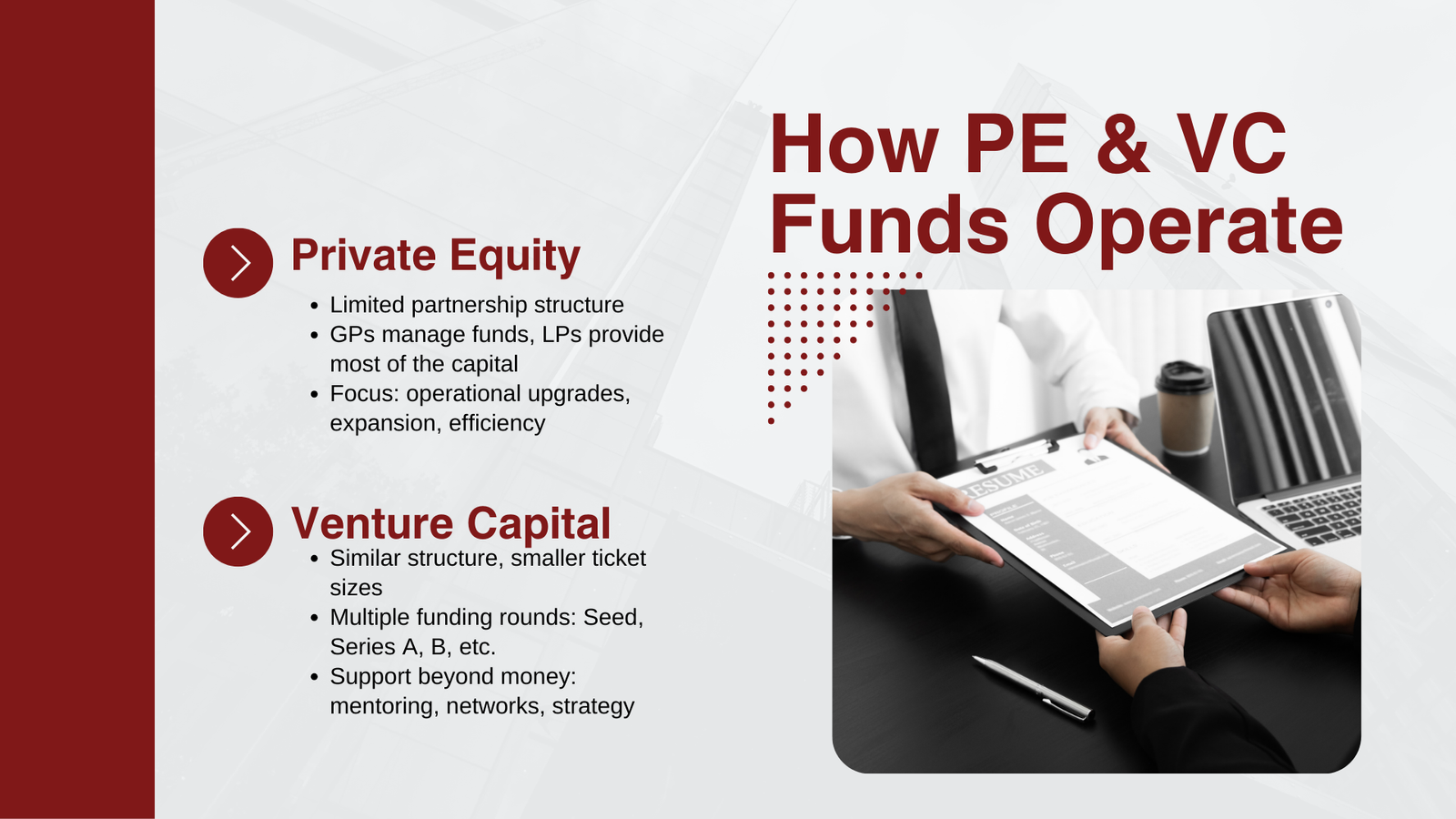
Challenges and Risks in Private Equity and Venture Capital
Even though they can offer investors high returns, investment in private equity and venture capital is not free of obstacles. Both the forms of investment face a high degree of risk, be it due to the volatility of the markets, some operational sabotage, change in regulation, and a sudden turn of the economy towards a downturn. Leverage, the most common method of financing acquisitions in private equity, may multiply returns, yet at the same time it exposes the deal to financial distress in case of poor performance of the company. Advances made also involve the introduction of operational changes, which may be complicated in nature, needing to manage shifts in culture and orientation of strategies.
In venture capital investments, the failure of startups is really high; therefore, losses form a normal part of the investment portfolio. The demand in the market could not be realized as it was expected, the competition could also surpass the company or the problem in technology could be too tough to handle. Moreover, in the case of both the investments in private equity and venture capital, investors will need to be ready to hold the investments before generating returns because these are illiquid investments. These investment models present their own inherent uncertainty, hence requiring an effective method of risk management, due diligence, and portfolio diversification to traverse the same.
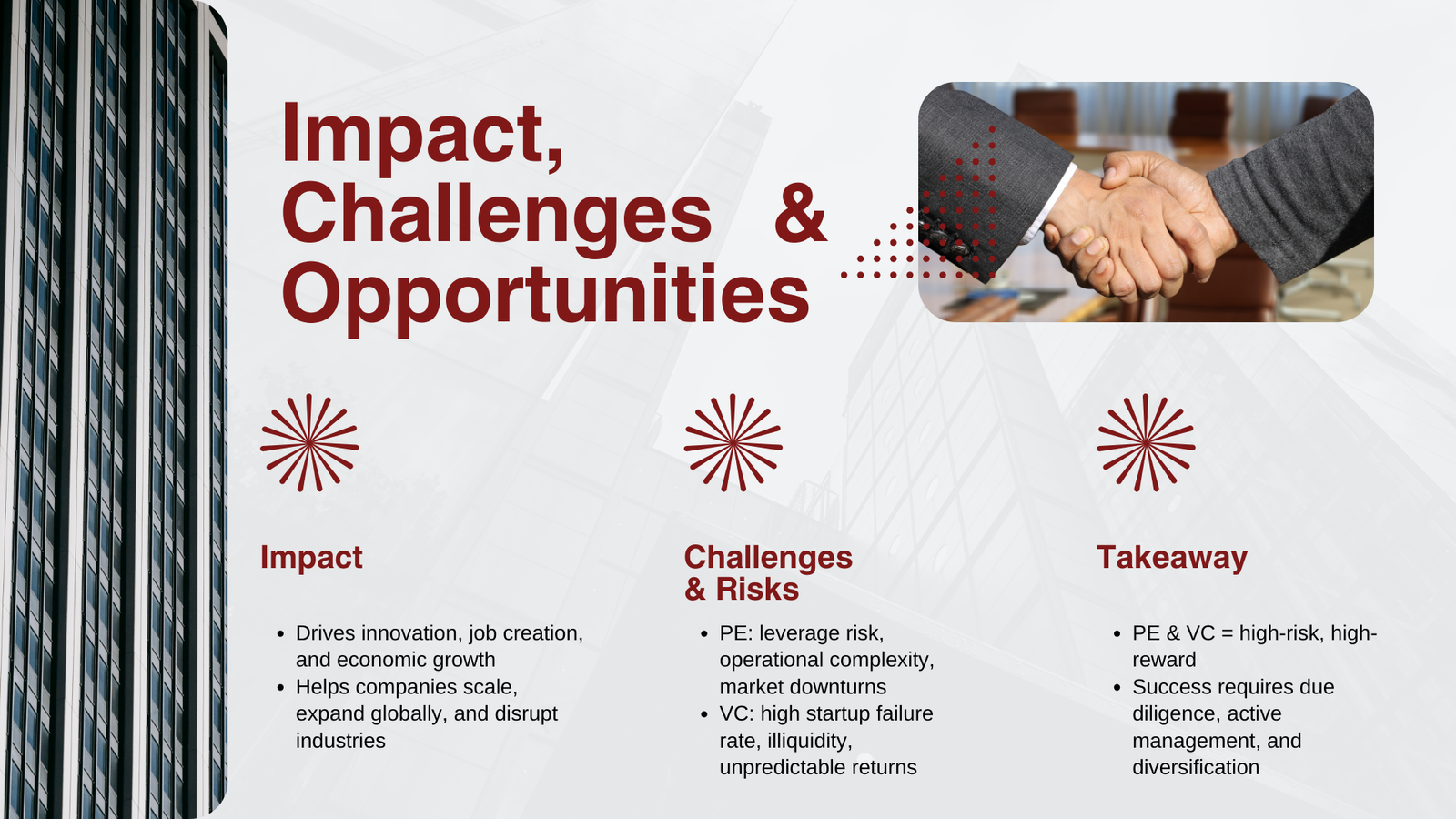
Conclusion
Different yet synergistic types of investments, both the PE and the VC industry occupy center stage in the field of business investment and development. Whereas private equity will deal in transforming and growing the established companies, venture capital will cater to companies with disruptive potential at early stages. The two have some specialized skills in deal sourcing, due diligence, portfolio management and value creation and both play a role in the development of industries and the economic growth.
To the entrepreneurs, knowledge of these models would open up across the path to strategic partners and capital that would not be accessible otherwise. To investors, the realm of private equity and venture capital provides a chance to be involved in some of the most dramatic business triumphs ever, but at a preparedness to accept risk in order to attain reward.



